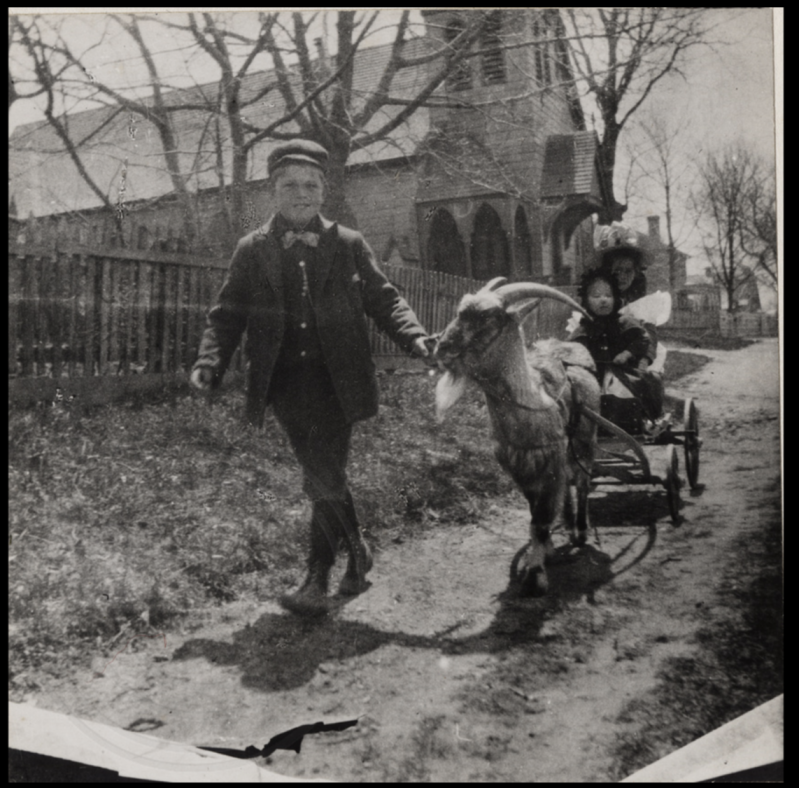I’m never happier than when the power goes out, and all the humming machines, low-buzzing appliances, furnaces, and neighborhood pool heaters shut down, and the house goes quiet. Partly I feel this relief because, like Greta Garbo, I just want to be left alone . . . and partly I feel this way because I lived for a few years in an apartment near the Flatiron Building in Manhattan that looked out over the roof of a mid-range ladies’ businesswear box store: The trunk-shape rooftop air-conditioning units roared and grumbled, and only ever stopped their complaining for a few seconds before firing up again, an interval during which your hair turned gray and time slowed, and the anticipation of the returning roar drove you loco, bananas, nuts. Once you’ve been tormented by neighbors’ noise, you can never go back to not noticing it.
Of an April evening, when the light is soft and the traffic is thin, few things are nicer during a global pandemic than a stroll around the backside of East Hampton Village, behind the pond and around the twin windmills, and quietly, quietly up and down a private lane. A bit of gentle trespassing is what the spring air calls for, letting yourself in through the gate to steal into the old back barnyard of the Mulford Farm — a calm corner of the village where you can squint and see the landscape of the past if you turn and look back across the grass and over the picket fence to where the sun is setting in the pink of the west. This is my favorite scenery: not the bare branches of November, but the bare branches of April, when everything lifts and begins again.
In this age of “Private!” signs and gated driveways, this sort of mild foray across other people’s property is likely to get a columnist into trouble. I am reminded of the best part of Woody Guthrie’s great anthem, the verse of “This Land Is Your Land, This Land Is My Land” that the kindergarten teachers rarely ask the children to sing:
“As I went walking I saw a sign there,
And on the sign it said ‘No
Trespassing.’
But on the other side it didn’t say nothing.
That side was made for you and me.”
Delight on an April evening is when the leaf blowers stop their raging and crawl back into their hidey holes to rest before another day of waking babies and destroying the common peace. No one loves a leaf blower, I think we can all agree, yet leaf-blower season has circled around again. “To everything there is a season, and a time to every purpose under heaven. . . ,” but I see no godly purpose in a leaf blower. A few times in recent weeks I’ve watched a landscaping crew blast the pristine and perfectly leafless brickwork of the sidewalk on Eastman Way, behind Starbucks. To misquote Ecclesiastes: There is a time to love and a time to hate, and leaf-blower-ing sidewalks is my time to hate.
There is nowhere out here that you can escape mechanical noise. There is nowhere on Long Island. Quite literally, nowhere. Where can we travel to, to not hear any mechanical or man-made noise, no highway engines, no overhead planes? North of the Arctic tree line, in the low-growing tundra? Maybe the Sonoran Desert, or the Great Basin? I’ve never been to the desert, any desert. I might have to book a post-Covid noise vacation.
The sound of engines is bothersome in a way that the sound of, say, peepers or a babbling brook is not. I personally think this has something to do with the quality of the noise, the character of the noise: Only man-made things have a uniform tone. A monotone, mechanical hum is an expression of non-life. Noise in nature is different: It varies and vacillates — as does light in nature, which flickers. Noise in nature is not steady or relentless. It vibrates, shudders, shimmers. There’s something deathly in the mechanical hum.
Have you ever been on a jumbo jet approaching a landing strip at night and looked out the porthole window and noticed how the pinprick lights of suburbia — far down there on the ground, in the dark slumbering streets surrounding the airport — are frozen and still? The points of light from a streetlamp or porch beam are not like starlight. The star shakes and vibrates when you try to fix it with your eye, just as a firefly flickers and flashes, or, of course, a flame. This is why street lamps in empty parking lots strike us as so lonesome: They are not living. They’re the deathly hum.
Did you ever read the remarks of the Apollo 11 astronaut Michael Collins, about the sinister silence he experienced as his spacecraft made 14 circles around the back, to the far side of the moon? The radio went dead and he was alone with the chilly nothingness of that cold satellite.
Do you remember the book “Silent Spring”? Stillness is what awaits when we kill off the species of Mother Earth.
Of an April evening, from the back of the Mulford Farm, engaging in a bit of mild trespass in the gloaming, I observed the other day for the first time that it isn’t the wind that makes a sound, it is the trees. The sound of wind in trees is a hush, or rush, like breathing, or the pulse in your ears, or the shushing sound you make for a sleeping child. The wind alone doesn’t sing; it needs the branches.

